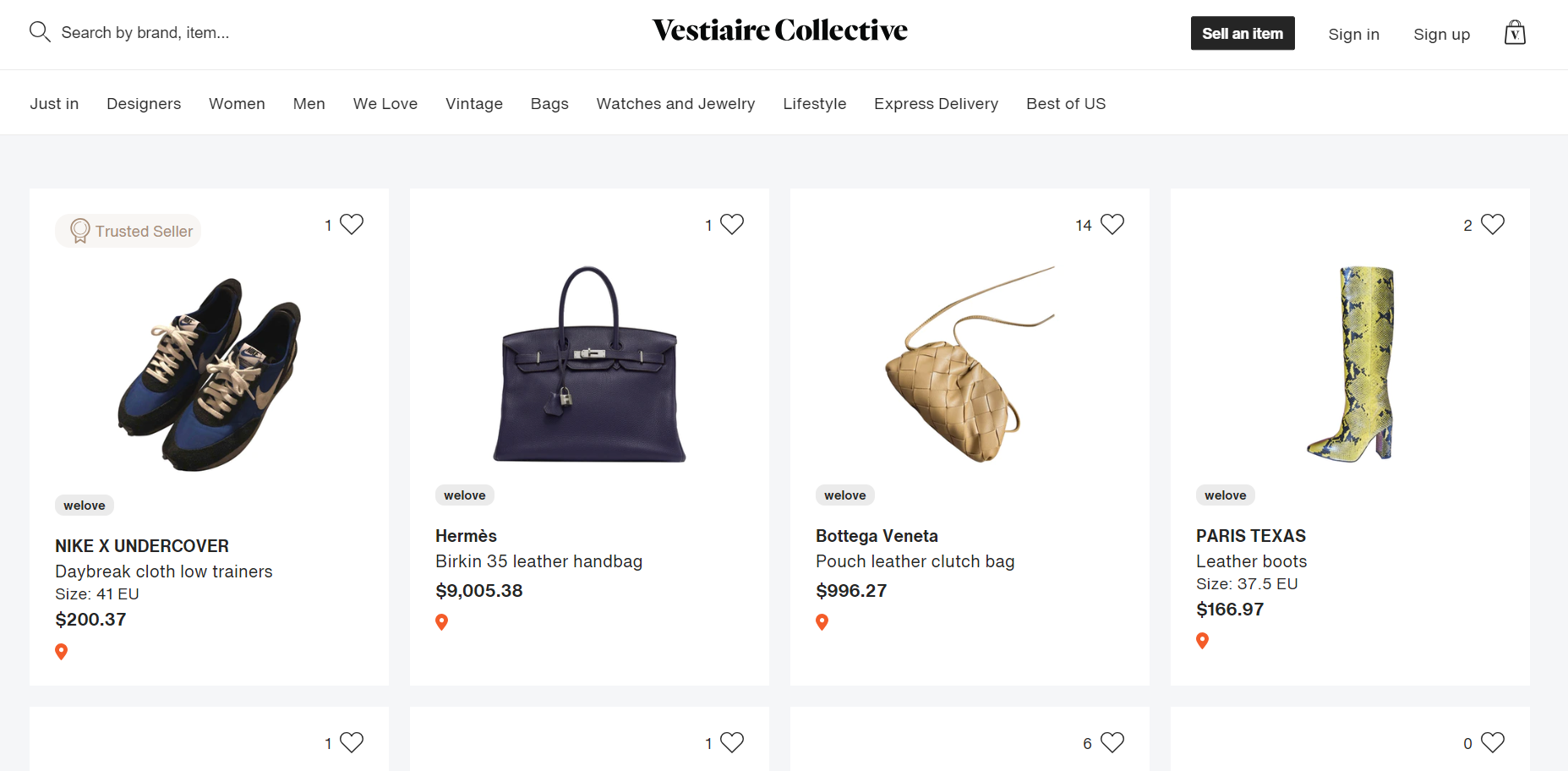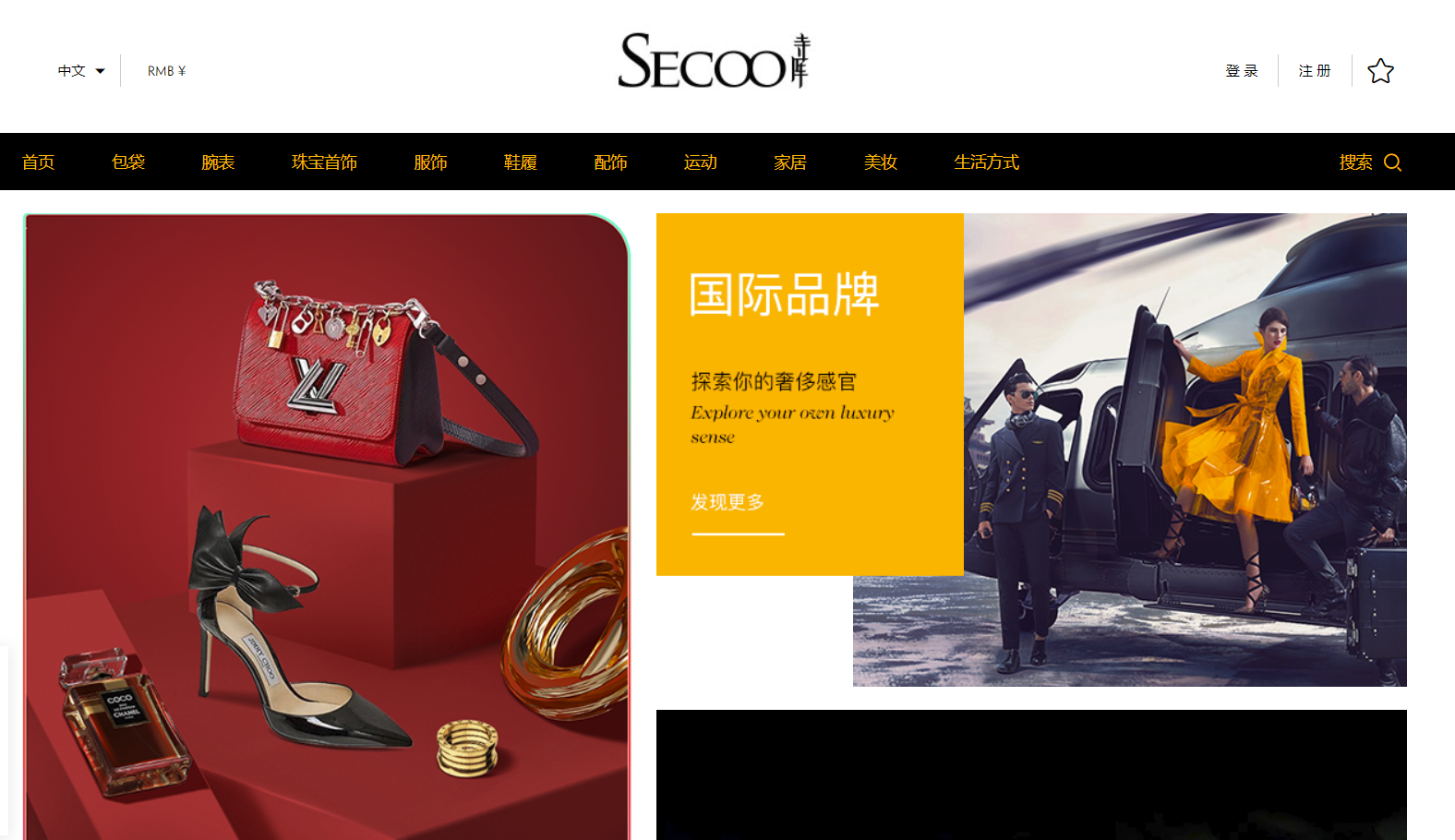The growing domestic second-hand luxury platform is facing the test of the market, supply chain, traffic and other aspects
Foreign media news , second-hand luxury e-commerce platform” Vestiaire Collective “recently announced a new round of financing of US $ 64 million. This round of investors includes new investors Korelya Capital, Vaultier7, Cuir Invest and Fidelity International managed funds. Vitruvian Partners, Conde Nast, Luxury Tech Fund and Vestiaire Collective CEO Max Bittner also made investments.
Previously, Vestiaire Collective received an investment of US $ 45 million in June 2019, and the total funds raised have exceeded US $ 240 million. This round of funds will be used to expand business to more countries, and the addition of new investor Korelya Capital will expand Vestiaire Collective’s business to South Korea and Japan.
“Vestiaire Collective” was established in 2009 in France. It is an online platform for the sale of second-hand luxury fashion products. It covers clothing, bags, watches, etc. It currently has more than 9 million members in 90 countries and regions There are offices in Paris, London, New York, Milan, Berlin and Hong Kong. According to the statement, more than 80% of the company’s transactions are generated by cross-border.
Vestiaire Collective said that it hopes to further develop its direct transportation mode, that is, the seller can directly send products to customers without going through the platform’s control and certification center. This service was launched last year and has been adopted by over 50% of orders in the European market, and has grown at a rate of 60% per month. The service will be launched in the United States early this year and will be launched in Asia by the end of 2020.
The founder Bittner said that the special period will not only challenge consumers’ shopping locations, but also the way of shopping. During the global epidemic, Vestiaire Collective stated that the platform ’s inventory and orders have not been affected, and believed that the circular business model of the retail industry has been recognized by more users.Consumers reduce clothing consumption and adopt a more conscious way of consumption.

Vestiaire Collective
2018 is regarded as the first year of second-hand transactions, and the continuous circulation has become the mainstream of the business model. The focus of Vestiaire Collective, American second-hand fashion platforms Thredup, The RealReal, and Poshmark are all shifting to the sustainability of second-hand transactions. The opening of a large number of offline stores, coupled with the industry’s luxury brands and fashion designers paying more attention to second-hand transactions, have promoted the development of overseas circular consumption rhythm.
only two , Xinshang, Red Bulletin , Luxury Circle TiAMOO , etc. Among them, only two completed a tens of millions of US dollars in B round financing in July 2019, in August Hong Bulin completed a B + round of financing before 20,000 US dollars, and in November luxury trading TiAMOO won a million yuan angel round of financing. Entrepreneurs and investment institutions are entering this low-saturation blue ocean market.
At the same time, second-hand luxury goods, as non-standard goods, sell a series of complex links from source, identification, valuation to after-sales. The platform also has bottlenecks in the supply chain that need to be overcome. First, from the upstream of the supply chain, there is a large supply gap in second-hand transactions, and sellers have doubts about the sales process; second, from the middle layer, the identification of second-hand goods requires a professional appraiser and a complete training system; Third, from the downstream perspective, second-hand luxury platforms need to find an increase in trying to sink the market.
In addition, offline experience stores are also seen as a way to understand users ’willingness to consume and expand brand influenceOne of the channels, and in the view of second-hand luxury e-commerce, the establishment of offline stores is not only about attracting customers through activities, but more importantly, reaching a cooperation with luxury brands to accept second-hand transactions. American second-hand fashion platform Thredup established partnerships with women’s clothing brands Reformation and Cuyana in 2018 to help them recycle.

Temple library
In addition to vertical second-hand luxury e-commerce, more and more fashion or e-commerce platforms have also joined this track. For example, the fashion e-commerce platform Siku sells new and second-hand luxury goods at the same time, distinguishing the two by grading; the luxury service platform package master is cut from the maintenance of luxury goods, and then extended to second-hand luxury goods and new product transactions; JD.com in July 2019 Opened a luxury service experience center “Jingdong Luxury Care” with a second-hand luxury sales area in the store; Farfech, a shareholder of JD.com, announced in February 2020 that it would withdraw from the “Farfetch Beatch” new product release strategy, which includes second-hand bag sales services Second Life.
Many of the second-hand luxury goods races entered the market, and the market is optimistic about capital, but traffic is always a problem. Taking Siku as an example, according to its 2019Q3 financial report, the growth rate of Siku GMV and monthly activity are gradually slowing down, and in August 2019, its first offline store “Cudian” was settled in Hangzhou, and was sent to touch on March 4 The expectations of new middle-class consumer groups in second-tier cities. However, the store is more responsible for the exhibition hall. Whether the consumer pays for the sinking market lacking brand education and awareness remains to be tested.
————————————————————————————————
I am Siqi. If you are interested in the topics or contact items discussed, please feel free to communicate, exchange and discuss with me. My WeChat account is: dsq1314qsd. Please note “Name + Position” when adding